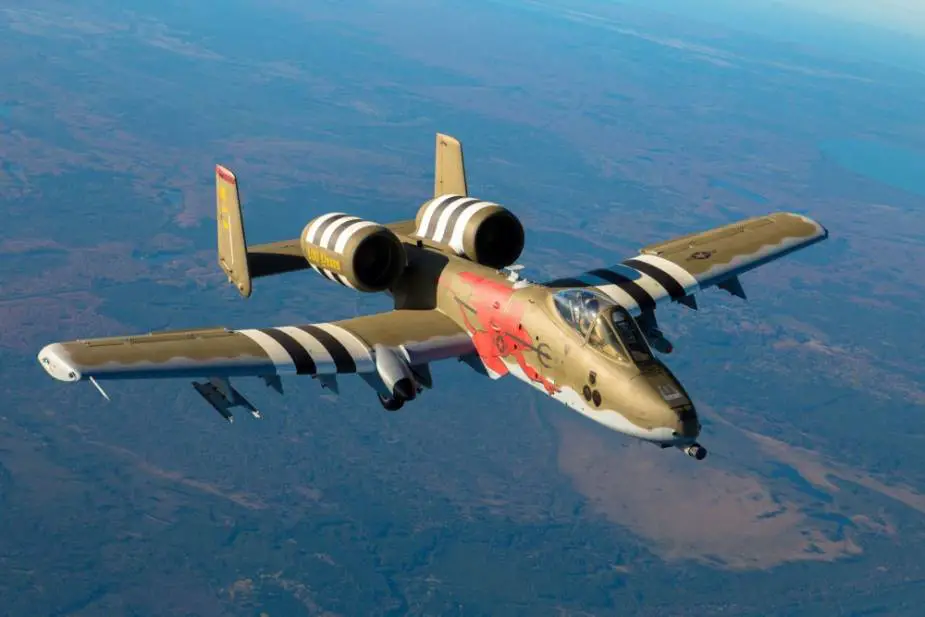Breaking news
Northrop Grumman awarded contract for A-10 Aircraft Structural Integrity Program.
Northrop Grumman has been awarded a $185,700,000 indefinite-delivery/indefinite-quantity contract for the A-10 Aircraft Structural Integrity Program Legacy VII. This contract provides for sustaining engineering services of A-10 aircraft.
Follow Air Recognition on Google News at this link

A-10 of the 107th Fighter Squadron. The heritage jet is painted with World War II devil scheme with D-Day strips, in commemoration of the WW2 Republic P-47 Thunderbolt and the Selfridge Air National Guard Base centennial celebration on Oct. 11, 2017 (Picture source: U.S. Air Force/Spc. John Brandenburg, 127th Wing Public Affairs)
The implementation of this contract will be performed in Clearfield, Utah, and is expected to be completed Nov. 22, 2030. This award is the result of a sole-source acquisition. Fiscal 2021 operation and maintenance funds in the amount of $6,480,694 are being obligated at the time of award. The Air Force Life Cycle Management Center, Hill Air Force Base, Utah, is the contracting activity.
The Fairchild Republic A-10 Thunderbolt II is commonly referred to by the nicknames "Warthog" or "Hog", although the A-10's official name comes from the Republic P-47 Thunderbolt, a World War II fighter-bomber effective at attacking ground targets. The A-10 was designed for close air support (CAS) of friendly ground troops, attacking armored vehicles and tanks, and providing quick-action support against enemy ground forces. It entered service in 1976 and is the only production-built aircraft that has served in the USAF that was designed solely for CAS. Its secondary mission is to provide forward air controller-airborne support, by directing other aircraft in attacks on ground targets. Aircraft used primarily in this role are designated OA-10.
The A-10 was intended to improve on the performance of the A-1 Skyraider and its lesser firepower. The A-10 was designed around the 30 mm GAU-8 Avenger rotary cannon. Its airframe was designed for durability, with measures such as 1,200 pounds (540 kg) of titanium armor to protect the cockpit and aircraft systems, enabling it to absorb a significant amount of damage and continue flying. Its short takeoff and landing capability permits operation from airstrips close to the front lines, and its simple design enables maintenance with minimal facilities. The A-10 served in the Gulf War (Operation Desert Storm), the American led intervention against Iraq's invasion of Kuwait, where the A-10 distinguished itself. The A-10 also participated in other conflicts such as in Grenada, the Balkans, Afghanistan, Iraq, and against Islamic State in the Middle East.
The A-10A single-seat variant was the only version produced, though one pre-production airframe was modified into the YA-10B twin-seat prototype to test an all-weather night capable version. In 2005, a program was started to upgrade remaining A-10A aircraft to the A-10C configuration, with modern avionics for use with precision weaponry. The U.S. Air Force had stated the F-35 would replace the A-10 as it entered service, but this remains highly contentious within the USAF and in political circles. With a variety of upgrades and wing replacements, the A-10's service life can be extended to 2040; the service has no planned retirement date yet.


























